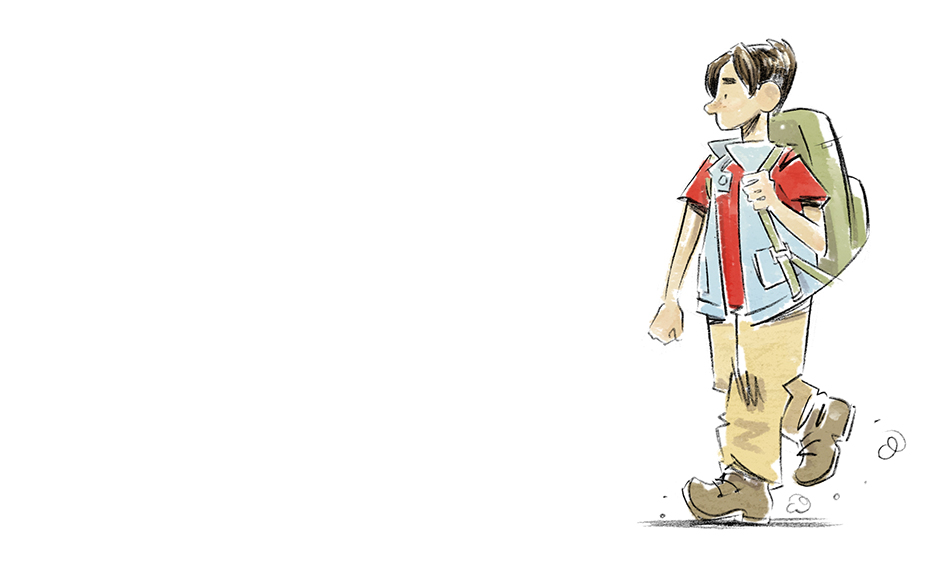Filed under: drawing, drawing theory, events, illustration, my antarctica, picturebooks, sketchbook, south africa | Tags: art, books, children's books, creative talks, drawing, illustration, picture books, sketch, south africa, writing, writing seminar
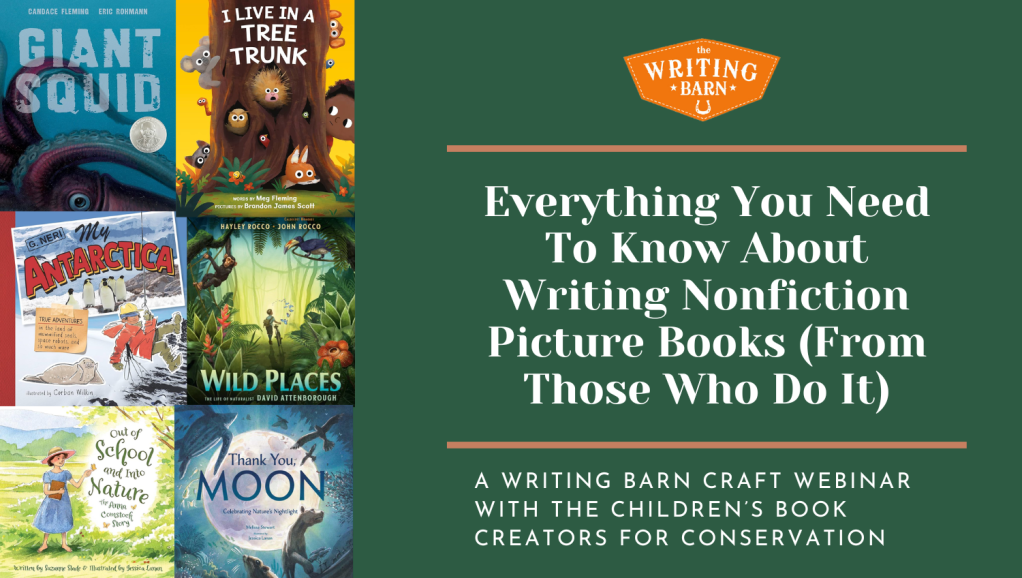
This March 16th I have the immense honour of speaking alongside six truly great children’s book creators in The Writing Barn’s online seminar about nonfiction picture books.
I’ll be speaking on the topic “Making Room for the Illustrator” and touching upon real-world visual research and how illustration can contribute to nonfiction storytelling.
Here is a one-time opportunity to learn new ideas, methods and approaches to creating nonfiction picture books from seven of the most successful book creators in publishing AND help save South Africa’s wildlife at the same time. In this fast and fun, 90 minute event we will cover every facet of the creation process from research and ideas to creating and selling your book. Above all, you will discover how to take known facts and transform them into a true story that is uniquely yours — exactly what agents and editors are searching for.
Led by the amazing group Children’s Book Creators for Conservation, this webinar will be full of unique insights and take aways. This is a charity event with $30 of your registration fee going directly to Wild Tomorrow, a nonprofit working to restore wildlife and wild places in South Africa.
Sign up for the online event here.
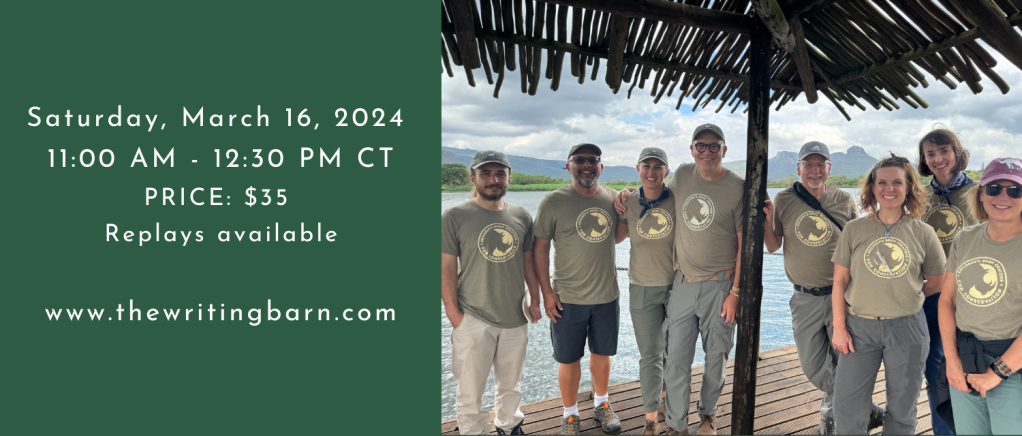
Filed under: drawing, drawing theory, illustration, illustrations, sketchbook, writing | Tags: art, children's books, draw daily, drawing, illustration, sketch, sketchbook, sketchbook inspiration, sketching, south africa, travel diary, travel sketchbook, travelogue, watercolour

(Cross-post with Wild Tomorrow blog.)
In 2023 I was asked along on a volunteer trip for conservation with Wild Tomorrow. At the time, I hadn’t heard of Wild Tomorrow and I confess: I had no idea what I was signing up for.
I’m an illustrator and a bit of a writer, and was set to go to the wildlife reserves of KwaZulu-Natal in the east of South Africa for two weeks as part of CBCC (Children’s Books Creators for Conservation, founded just this year by Hayley and John Rocco), ostensibly with the aim of conducting visual research in sketchbooks for a potential book about the subject of wild animal conservation.
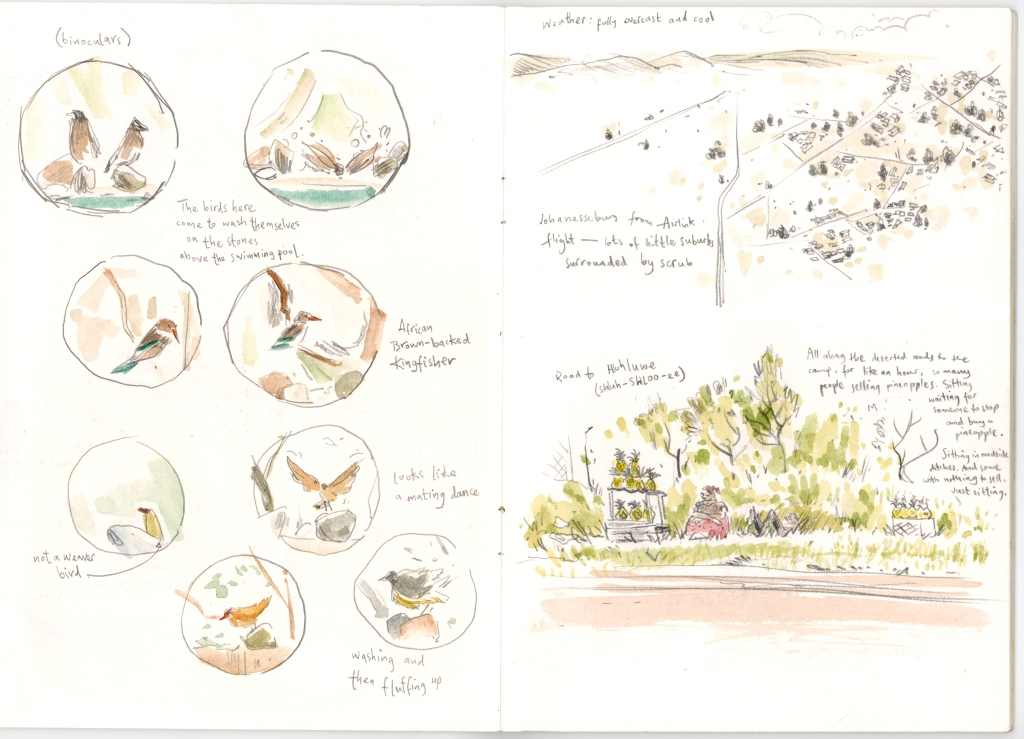
Being kind of travel-phobic I approached the trip with some uncertainty. What would these two weeks involve, really? I wasn’t sure. We were provided with an itinerary, which detailed the facts of the unbelievable things we would be doing each day, but these things seemed so far away: what did they really mean?
Sat behind a computer screen in drizzly England, it was hard to think of more than a tourist cliché of ‘go to place, see animals, be amazed.’ And I was worried that I might not be amazed enough, that my heart might not be able to go somewhere so big.
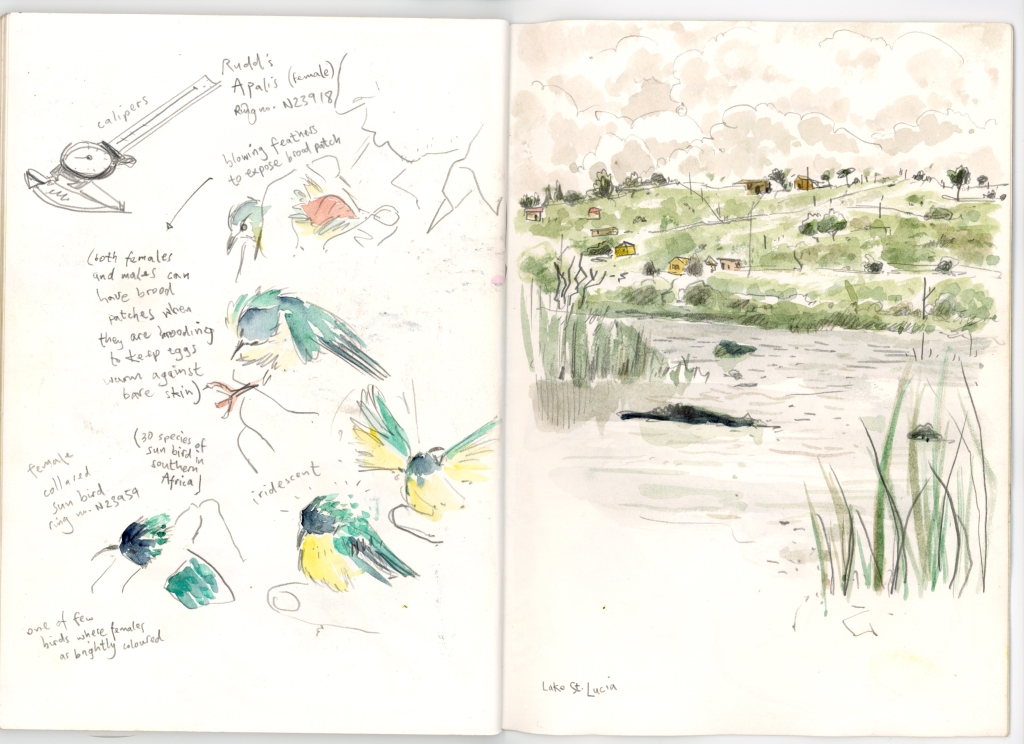
Before this year, I had never had any intention of going to South Africa or seeking out the famous animals of the country, and I’d certainly never been on a trip of this sort. So the opportunity came without preconceptions, and without any notion of what I could contribute, or what I could take from the experience.
This feeling continued even after touching down in Johannesburg and meeting all the lovely, enthused people I would be spending the next two weeks with. ‘Everyone else seems to know what they’re doing here,’ I thought to myself, ‘And I’m not sure that I do.’

But as the days went on, I found myself gradually overwhelmed by the strange new life that Tori and the Wild Tomorrow crew invited us into. In spite of my own hang-ups and misgivings, the country and its people began pulling me into their world, and by the second week, my mind and my heart had been blown wide open, and in time, I began to understand why I was there.
I wasn’t the only one. In conversations with others, I heard similar concerns: being unsure if coming on the trip was a constructive thing, and whether one had something to contribute to the group effort. I guess it’s more natural to have these doubts than I realised. But the doubts we had began to be overtaken by the undeniable optimism of what we were involved with.
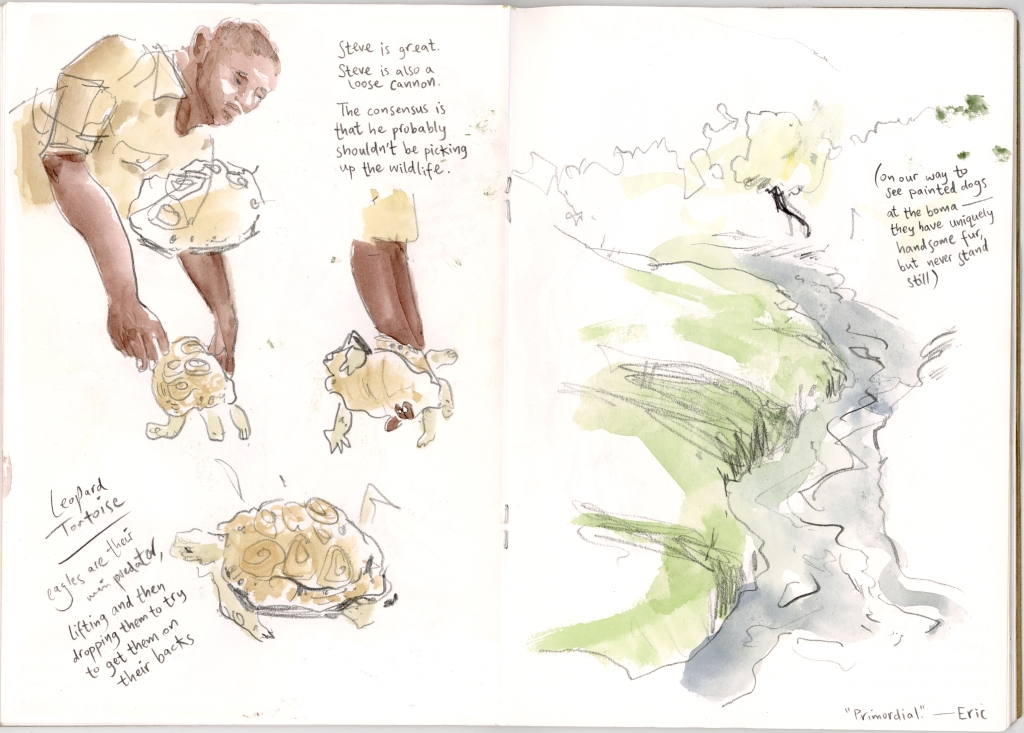
Though I had begun the trip hidden behind my sketchbook, my immersion in the place became such that by the first weekend I neglected to draw for a couple of days, stunned and simply taking it all in and enjoying getting to know everyone.
But then, remembering the intended purpose of the trip, I returned to my drawing and note-taking with a renewed vision: that I could use the sketchbook to communicate my emotional and totally subjective experience of the beauty and importance of the threatened natural world, as well as the people working to protect it.
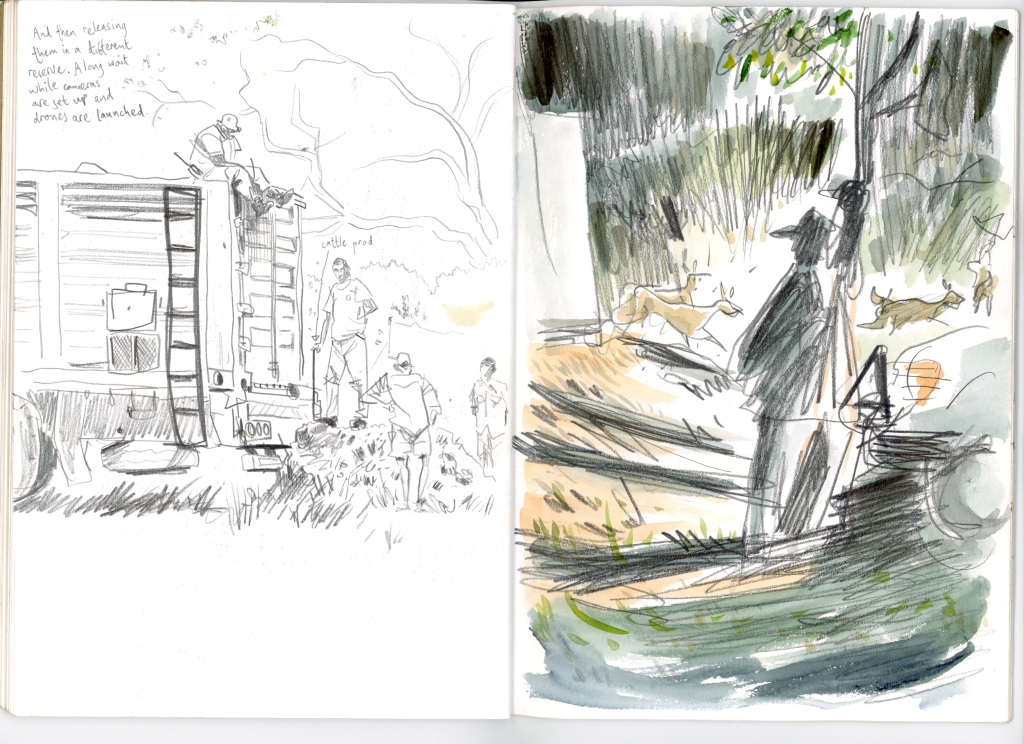
Compared to the tireless work of those who wake up every day and go out there on this mission, I do have to wonder what small part my abilities can contribute to the cause of conservation. But when I experienced the response people had to my drawings, I began to understand the importance of communicating experience, and that there can be something specially significant about a drawing or a very personal piece of writing.
I was even more fortunate to be travelling with fellow book creators as part of CBCC, and had the companionship of sketching alongside wonderful artists like Eric, Brian, and Jessica whose talent and experience and generosity of spirit were both humbling and an inspiration.
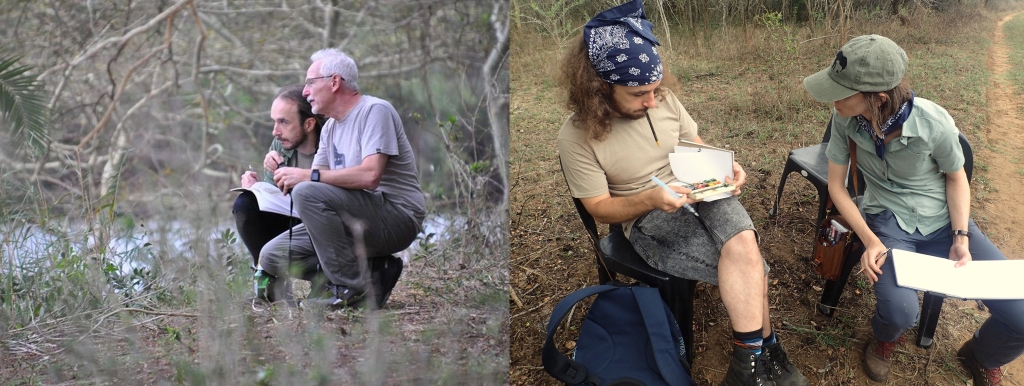
‘If I went in to this with a hamfisted idea of what conservation meant’, I thought, ‘Maybe other people have the same unclear or stereotypical vision of all this, and maybe I can share some of my dawning understanding with them.’
Can a drawing capture something that a photograph or a video can’t? Again and again people told me, yes, it can. Drawing opened up conversations with rangers, landowners, vets, locals, and fellow tourists from all over, and what wonderful conversations they were: driven by their love and awe for what was in front of us, a love and awe that they helped me to discover too.

I guess there’s a being there in drawing that people respond to. Someone asked me, ‘Why not take a photograph and draw it later?’ But that would only be drawing animals. And going into the experience, I had worried that drawing animals was all it would be.
But being there, and being a part of it, mattered. From people’s kind and open responses to what I was doing, I learned that by being there I could do much more than simply draw animals: I learned that I might be able to articulate something of how it feels to be there, in the trees where an elephant has fallen, to feel her heated breath, the pulse in her ears, the texture of her skin. And the mood, the tension, the atmosphere. And the determination and care of the people who do this work.

I see art as a way of communicating things that can’t be described in the ordinary ways. There are things we can feel and see that defy simple description, and we saw these things every day. I like to think that this is why poetry exists, to give us the means to articulate feelings that can’t be articulated.
I just hope that a little something of my appreciation for the dignity and vulnerability of these animals and these people, and these places, can come across in my drawings enough to inspire others to feel something of the understanding that dawned at these moments of intensity.

It would be tempting to tell everyone to go buy a ticket right now and hotfoot it to KwaZulu-Natal for two weeks with Wild Tomorrow (and if you’re an artist, a photographer, a poet, or simply a dreamer, then you should consider it if you can), but I also took away a broader message.
We go through many things in life, and each of us lives a different life. There are places you will go that I never will. You may live most of your life in a faraway city I yearn to visit but never will, with your own dreams and fears, ecstacies and heartbreak. We can each only live one life. But by keeping our eyes and our hearts open, and by making art in any way we can, I hope we can let each other in to our own subjective experiences, and see a little bit through each other’s eyes, and live a little bit of each other’s lives, and capture some essence of the fleeting moments in time that make us who we are, and finally understand one another.
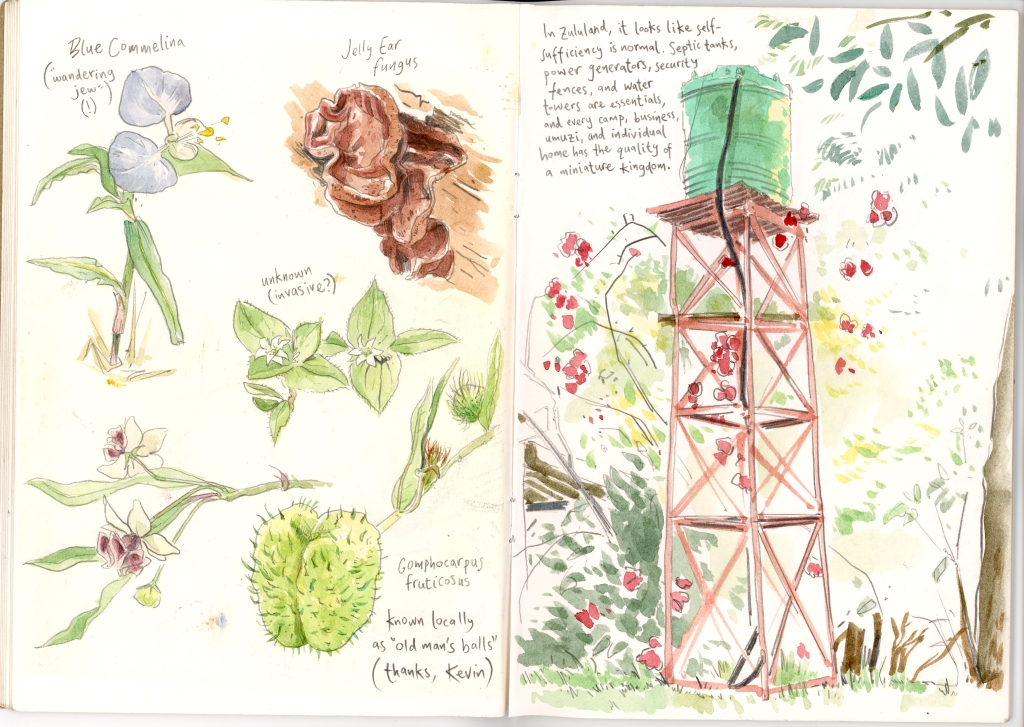
Although I went in as a clueless bystander, unconvinced that I had the spirit to rise to the experience, I found myself deeply moved by the things that the people at Wild Tomorrow worked tirelessly to make us a part of and by the glimpses that I had of the lives that go on there. My simple little sketchbook was merely a tool that helped to make this connection happen.
I still need to figure out how to develop all this into something that can contribute to Wild Tomorrow and the wider cause of public communication of conservation issues which is the mission of CBCC. But just going, and being there, was overpoweringly positive, and, I hope, the first step in something very good, and one of the most enriching and fortunate experiences of my life as an artist.
(Photos courtesy of Greg Neri and John Rocco.)
Filed under: sketchbook, south africa | Tags: art, children's books, sketchbook, south africa
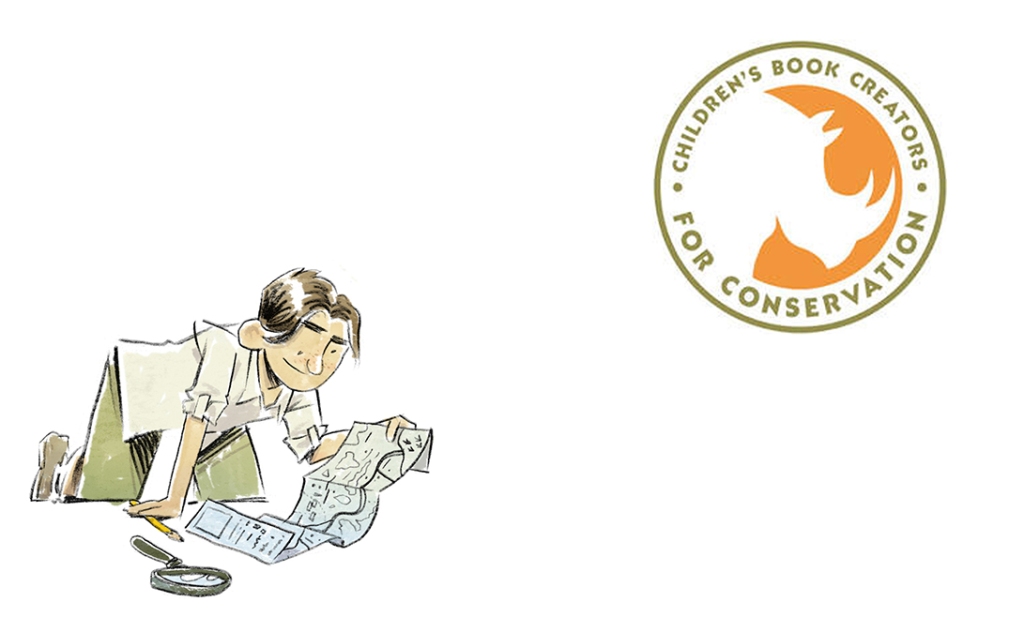
In a couple of months I’ll be joining some great writers and illustrators as part of the Children’s Book Creators for Conservation @cbcc_wild on a trip to South Africa to learn about wildlife conservation in the area, from the perspective of book creators.
I’m planning to spend every free moment sketching with a view to using the visual research for some forthcoming projects.
We’ve started a fundraising effort on behalf of the trip’s organizers at Wild Tomorrow Fund @wildtomorrow to contribute to their ongoing conservation work.
Read our press release in Publishers Weekly.
The writers and artists are all funding the trip ourselves, so all donations go directly to to conservation, and donors will receive news, updates, and postcards from the trip.
Donate at the Wild Tomorrow website!
